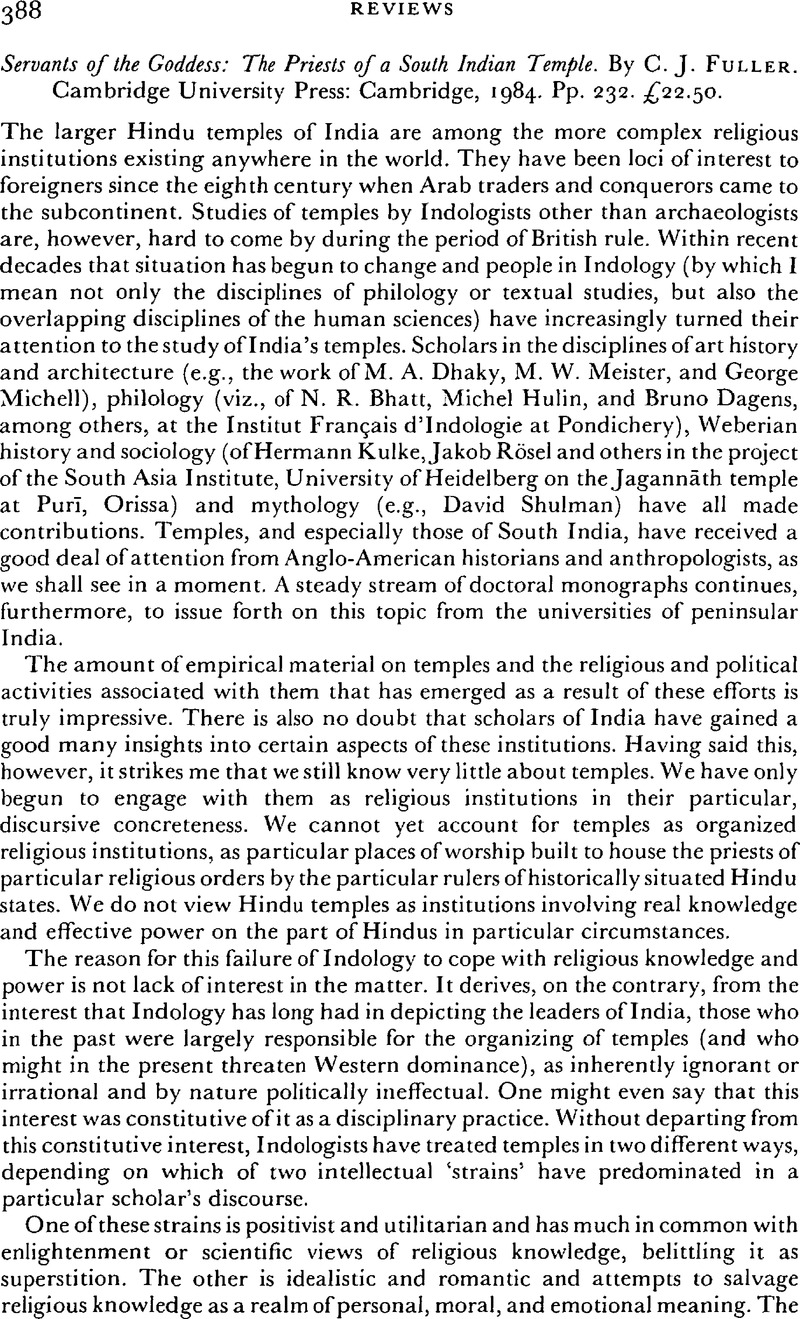No CrossRef data available.
Published online by Cambridge University Press: 28 November 2008

1 Sastri, K. A. Nilakanta, Early History of the Deccan, ed. Yazdani, G. (London, 1960), 241–2, 424–5, represents this view, as something of an apology for the temple, quite well.Google Scholar
2 See Havell, E. B., The Ancient and Medieval Architecture of India: A Study of Indo-Aryan Civilisation (London, 1915), 119.Google Scholar Similar is the position of Kramrisch, Stella, The Hindu Temple (Calcutta, 1946), 179.Google Scholar For a discussion, consult Mitter, Partha, Much Maligned Monsters (Oxford, 1977), 270–7.Google Scholar
3 Not atypical are the intimations of Eliot, Charles, Hinduism and Buddhism: An Historical Sketch (New York, 1954; 1st edn, 1922), II, 174–5.Google Scholar
4 See Thrasher, A. W., ‘The Dates of Mandana Miśra and Śamkara,’ Wiener Zeitschrift für die Kunde Südasiens, XXIII, 117–39.Google Scholar
5 On substantialism, see Collingwood, R. G., The Idea of History (New York, 1956), 42–5, 47–8, 81–5.Google Scholar
6 On Śaiva Siddhānta and its advocates’ claim to supremacy, see, for example, Pillai, J. M. Nallasvami, Studies in Śaiva-Suddhānta (Madras, 1911), especially 273–315.Google Scholar